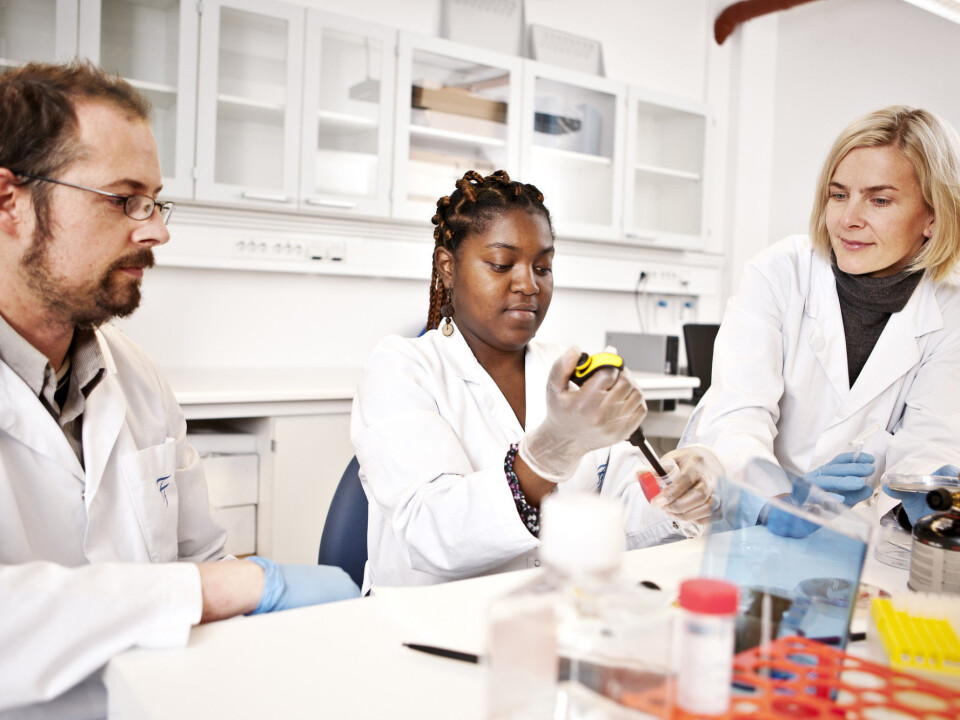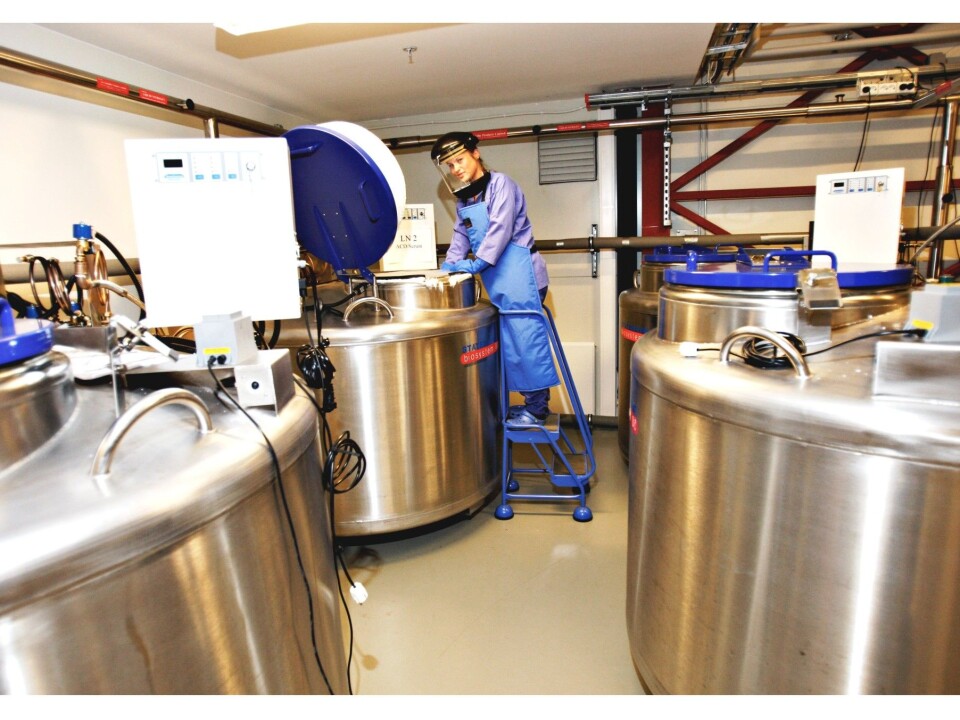An article from Norwegian SciTech News at NTNU

Uncovering the secrets of immune system invaders
Some bacteria and viruses take advantage of the way our immune system works to infect us. Researchers are uncovering the mechanisms by which this trickery takes place.
Denne artikkelen er over ti år gammel og kan inneholde utdatert informasjon.
The human immune system is a powerful and wonderful creation. If you cut your skin, your body mobilizes a series of different proteins and cells to heal the cut.
If you are infected by a virus or bacteria, your immune system responds with a series of cells that attack the invader and neutralize it.
But sometimes invaders find ways to exploit the very cells that are designed to protect us. Tuberculosis (Mycobacterium tuberculosis) and its lesser-known (and less virulent) relative Mycobacterium avium do exactly this, by hiding in immune cells called macrophages.
A group of researchers from the Norwegian University of Science and Technology (NTNU) have now clarified one important step in the mechanism that allows these mycobacteria to trick the immune system so they can hide in macrophages.

Although the finding itself does not have immediate clinical implications, it adds to a greater understanding of the general mechanisms of how the immune system works, says corresponding author Trude Helen Flo, a professor of cell biology and co-director of NTNU’s Centre of Molecular Inflammation Research (CEMIR).
“We think this is more of a general mechanism,” and not just limited to mycobacteria, she says.
"And because certain cancers, such as lung cancer, are linked to the inflammation that the body mounts as a first step in the immune response, the finding adds an important piece to the puzzle of understanding what regulates inflammation and how this regulation can go wrong."
Lady Windermere syndrome
Flo and her colleagues are interested in knowing more about how mycobacteria are able to persist in the human body because one variant, tuberculosis, remains a problem in lesser-developed countries and is becoming more of a problem in developed countries as antibiotic-resistant strains of tuberculosis spread.

Mycobacterium avium is less likely to cause illness in healthy people, but is an organism that is found everywhere, which makes it easy to study. It can, however, cause major health problems in people with compromised immune systems, such as in diabetes or AIDS, in children, or people with lung defects, says Flo.
In fact, she says, during the 18th and 19th centuries, when it was considered impolite for well-to-do women to cough or spit, it was not uncommon for wealthier women to be afflicted by Mycobacterium avium.
Infection by Mycobacterium avium is sometimes called “Lady Windermere syndrome,” in reference to an 1892 Oscar Wilde play that pokes fun at manners and morals in upper class Victorian society.
Turning the immune system on and off
The researchers used Mycobacterium avium infections of human cells to study the role of a poorly understood protein called Kelch-like ECH-associated protein, also called Keap1.
When Mycobacterium avium invades a macrophage, the normal response of the macrophage is to send a signal – a call for help – for other cells to come help. This signal, in the form of something called inflammatory cytokines, causes inflammation in the body.
“But once this inflammatory mechanism is turned on, it is so strong, the body reacts very promptly to turn down the reaction,” Flo says.
“Otherwise, if the reaction is uncontrolled, you can have septic shock.”
The researchers found that Keap1 helps to quickly turn down the immune system reaction when a macrophage is invaded by Mycobacterium avium – which aids the mycobacteria in persisting in the macrophage, according to Flo.
“Keap1 is a negative mechanism for controlling inflammation,” she says. “But this negative reaction is also what makes us susceptible to Mycobacterium avium. The balance (in the immune system response) has to be perfect for Mycobacterium to survive.”
Immune cells from healthy donors
One distinct feature of the study was that the researchers used cells from blood donors as part of their research, rather than “cultured” immortalized cell lines that have been grown in the laboratory for decades and whose responses may be very different from primary cell isolated directly from humans.
Flo says that while using human cells from blood donors made the research more difficult and time-consuming, it also made the findings more valuable in terms of eventual clinical applications.
“We chose to isolate immune cells from healthy donors for our experiments,” she says. “These more closely reflect what is going on in real humans, and – although they are tricky to work with – can give us findings we believe should be more relevant for real disease.”
Keap1 mutations and cancer
Flo says that one reason that Keap1 was of interest to her research group was because mutations in the Keap1 gene have been found in cancers that are associated with inflammation, such as lung cancer.
That means that Flo or other researchers could look for mutations in Keap1 in blood samples from biobanks, such as NTNU’s Nord-Trøndelag Health Study (HUNT), which has collected health and biological information and material from 120 000 individuals over the last 30 years.
“We can look at patients’ genes and see if they have accumulations of mutations in Keap1, which is at the core of regulating inflammation,” she says. Biobanks such as HUNT that have collected data over decades allow researchers to see how different mutations are associated with different cancers, for example.
The Keap1 finding was published 20 July 2015 in PNAS, the Proceedings of the National Academy of Sciences of the United States.


































